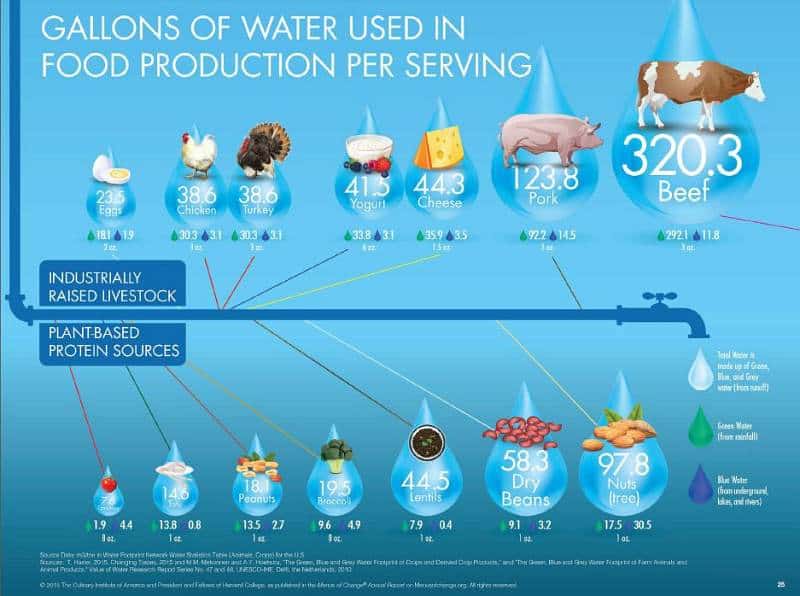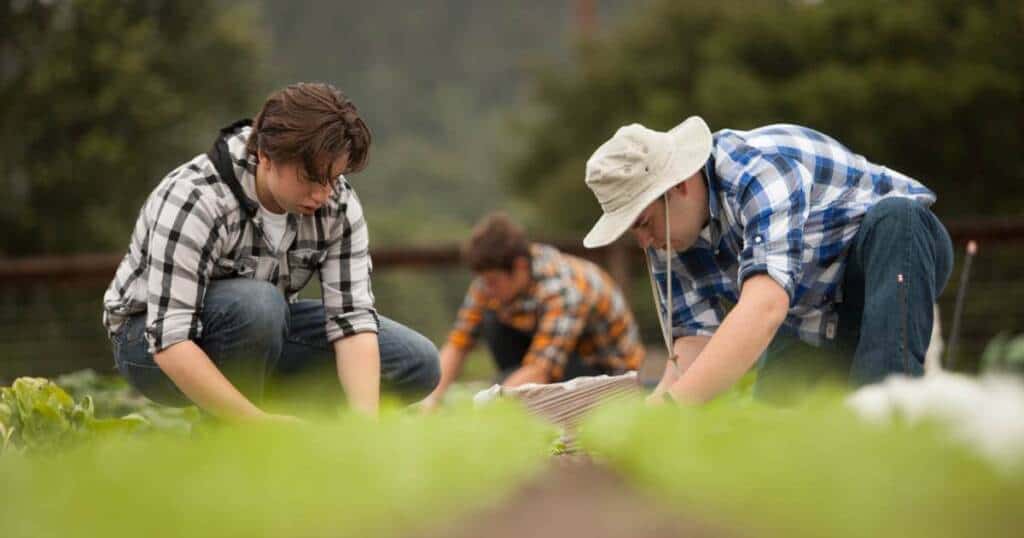“We did not inherit this earth from our ancestor but have borrowed it from the children.”—Native American saying
There couldn’t be a more appropriate saying to introduce the course, Sustainable Food Systems that I’ve developed and teach in the Applied Food Studies bachelor’s program. The objective of the course is to understand and evaluate the resource-intensive nature of our food system. Students can then use this knowledge to make more informed choices that lessen our utilization of water and energy resources and minimize external forces that can impact our water, soil, and air.
It should not be surprising, when evaluating the food system in its entirety, we find that the hyper-consumptive nature of the current model is negatively impacting our environment. Most would agree that as resources become scarce and ecosystems become more degraded, productivity and choice would diminish.

These threats to our food system have challenged us to think more deeply about what actions and best practices we can employ to ensure a long-term resilient food system. The focus on sustainable food systems is quickly emerging as one of the more pressing themes in our food world. New disciplines such as enviro-nutrition and agroecology are helping us to understand a new food system model. And catchphrases like “cooking for the environment” and “soil to soil” provide a focused mindset within the kitchen.
Best practices such as plant-forward diets, reducing food waste, and utilizing local, seasonal fresh ingredients not only improve the health of our environment but can improve our personal and economic heath as well.
Students who take this class, both our Applied Food Studies students and those who chose to take this as an elective, become aware and committed to reducing the impact of their food choices. For those who desire to study the subject at a higher level, CIA now offers an online master’s degree in Sustainable Food Systems.
How many of you know the amount of water required to produce an eight-ounce cup of coffee?1 How about how much water is needed to result in a quarter pound of ground beef2 or to create enough cotton to make a pair of jeans?3 Better yet, do you know the energy required to produce a 16-ounce can of corn4 or the percentage of food wasted in an average U.S. home?5 (Answers below). The question of how and why these statistics matter is discussed and studied in this course.
Students have the opportunity in a final project, paper, and presentation to advance the sustainability of some element of our food system. Students have done projects on a diverse number of topics ranging from entomophagy—promoting the eating of insects as an alternative protein source—to community level anaerobic digestion of food waste for energy production. This project allows for them to delve deeply into any area of their personal interest.
As graduates, these individuals will not only positively impact our food system in those areas of their direct involvement but also, as they progress through their careers, instill these concepts in others.
Answers:
- 8 ounces of coffee = 37 gallons of water for growing, processing, and brewing
- Quarter pound of beef = 450+ gallons of water to produce
- Pair of jeans = 2,000 gallons of water to make the cotton
- 16-ounce can of corn = energy input of 3,065 calories from farm to table versus 375 calories in consumption.
- Fully 25% of all food purchased is discarded.
Answers are based on Life Cycle Analysis and are available from a number of sources.
By Daryl Mosher, a previous CIA associate professor of culinary arts.
